In today’s post I’m sharing a system for creating a Nature Escape Day. It’s something I’ve had in my life for quite some time and it’s become incredibly important to me. Maybe having regular Nature Escape Days will be helpful for you too!
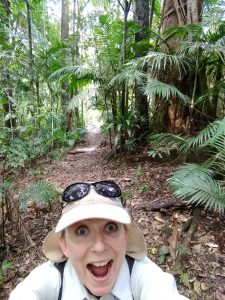 Have you ever taken yourself away for the day, all by yourself, for a day of peace and quiet in nature? Maybe to the beach, or rainforest or a National Park or maybe a river or lake?
Have you ever taken yourself away for the day, all by yourself, for a day of peace and quiet in nature? Maybe to the beach, or rainforest or a National Park or maybe a river or lake?
Most of us have done this with other people like our families or a group of friends or a club outing. But what about doing it by yourself? And with intention ….. FOR yourself?
Solo adventures vs group adventures
I know a lot of people who go off on regular solo adventures – camping, bushwalking, kayaking. But I know even more people who don’t. People tell me they’re too nervous about doing something like that alone because they don’t have the skills, knowledge or confidence, or they haven’t ever thought about going it alone.
I was one of those people. All my life I’ve had company on my outdoor adventures.
Family adventures in nature
As a kid, it was my parents and siblings heading out on occasional bush walks in the rainforest, playing on the beach, even helping to weed the garden, pick strawberries in the backyard and feed the goats were little adventures in themselves.
Adventures with friends in nature
As I grew older my outdoor adventures were with the friends I made in Girl Guides and Rangers. We’d go camping with our leaders and have structured activities. In our Patrols or small groups we’d cook over a campfire, do nature craft, solve problems, create skits to entertain the rest of the crew as we sat about the evening campfire singing camping songs and ditties, keeping warm. We also learnt to find our way around the bush using a map and compass, sometimes it was a hand drawn mud map not a topographical map, and we’d work on earning our badges together.
It was a lot of fun, I learned a lot of practical skills and life skills, developed confidence in my abilities and learned about trust. I also learnt that I slept better when I was away camping or after a day in the outdoors than any other time. And I’m pretty sure my appetite grew too!
The next generation – adventures in nature
As the years went by, my outdoor adventures continued with my husband – camping, bushwalking, paddling on creeks and the bay on surf skis and riding bikes. When our children came along we included them in our outdoor life too although our adventures were modified to accommodate their needs. We still bushwalked, camped and spent lots of time in the garden and exploring the bush paddocks and National Parks where we live.
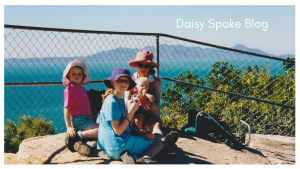
What about “solo adventures” in nature?
As you can see, I’d always had others with me on my adventuring activities. The idea of solo adventures hadn’t even entered my mind until my children were older. I think there are a lot of people, women in particular, in the same position. I found myself craving for a bushwalk or mountain bike ride during the week, yet it would mean going it alone. I was worried that everyone else would worry about me going off on my own, but when I examined my heart, I felt quite okay about it myself. I was a bit nervous having never gone out alone, but I knew cognitively that I had the skills and knowledge to be safe and have fun.
Obstacles to going it alone
For me, the biggest obstacle was overcoming my worry that other people would worry about me having a day in nature by myself. And the only way to overcome that was to bring it out into the open, and have a conversation with my family and friends about the idea. And of course, my worry was unfounded! They trusted me even more than I trusted myself to go it alone.
And so for years now I’ve been taking myself off on regular escape days into the bush mid week. I’ve created flexibility in my lifestyle by designing my business around what’s most important to me. So this means I can have regular escape days that are planned and built into my life.
Nature Escape Days benefit you personally and professionally
Nature Escape Days really help me not just personally, but in business as well. With each day away, I come home energised and motivated, filled with creative ideas ready to action.
Although some of my escape days are set aside for relaxing and rejuvenating, most times I pack my office into my backpack and take some writing, planning, reading or podcasting to do. I find that when I get into the bush into a peaceful place surrounded by nature, I’m so much more focused. My productivity levels are much higher and it’s well worth the extra effort and time it takes me to get there instead of working from my home based office where the Internet keeps me connected to the world better than to my inner self.

How to create a Nature Escape Day
1. Schedule it into your diary and stay committed
As with all the best things in life, a bit of preparation is key to success. That means planning ahead and scheduling days into my calendar that are blocked out from other commitments, and sticking to it! It’s so easy to let yourself book other things in and let go of the time you’d scheduled for your date in nature.
This process of staying committed to your day away is a challenge, but it’s also a valuable process! It’s about learning to set boundaries, prioritising yourself and your self-care, trusting that your inner self knows best and that the investment of time and energy you make into your escape day is going to be worth it.
2. Mental preparation – watch out for those inner stories!
Another key to successfully having regular Nature Escape Days is to prepare yourself mentally. Do you need to challenge the ‘shoulds’ you have? These are the stories you tell yourself or that you’ve absorbed from the world around you about what you ‘should’ be doing. Or perhaps you need to challenge your ‘people pleasing’ stories like the one that I had dreamed up in my imagination but wasn’t actually true. Or maybe the ‘I’m selfish’ story needs to be challenged because everyone, even YOU, can benefit from taking a day off. There are so many other stories that can get in the way of your happiness – do you have any stories blocking your way?
3. Physical and logistical preparation
With your mindset on-side, it’s time to think about the physical preparations and the logistical preparations. These are also completely doable.
Where and When?
For your first Nature Escape Day, plan something simple that’s aligned with your abilities and that’s accessible for you. If that means a half day instead of a whole day because you need to take children to school and pick them up afterwards, then go for that option. If it will take you hours to get to your closest National Park or beach, then opt for a park, river or botanical garden closer to you.
It’s vital that your plans are doable and not so complicated that it adds extra layers of unnecessary stress to your life. Your plans need to be in step with where you are in your life journey, so keep it real.
Nutrition
Some other tips for getting your escape day off and running include planning your nutrition for the day. Are you going to pre-nature escape dayprepare and pack your lunch to take with you, buy something en route, or is there food for purchase at the location you’re planning to go to? Ideally take plenty of water with you.
What to do?
Are you planning to go for a walk, meditate, listen to podcasts, read, knit, do some work or simply be?
What to take?
What do you need to take with you? Make a list of gear that you want to have with you for the day. Your list will depend on how you want to spend your day, what you’d like to do, where you’re going and what the weather will be like.
As far as gear goes, it’s always a good idea to include some first aid supplies especially if you’re going solo or somewhere with limited services and not many other people. As a minimum I always have a snake bite bandage with me. Even though you’d be pretty unlucky to get a snake bite, I often encounter them on my outdoor adventures, mostly browns and blacks which are highly venomous. I’d rather have a bandage with me, and know how to use it, then not. If you take regular medications for example for asthma, take it with you. These items should always be on your gear list.
4. Create a checklist so you can repeat often
As you take yourself on more and more escape days, you’ll be able to create your own checklist to streamline your preparations and make them as smooth and stress-free as possible. That way you’ll maximise the benefits of your day whilst minimising the hard work associated with it.
I’ve created a checklist to help you get started. When you subscribe to my Grounded Inspiration newsletter, you’ll be able to download it for free for a limited time only. You can expect to see my newsletter in your inbox about twice a month when I share a few tips and resources to help you live an inspired, active and health-filled life by connecting with nature.
Already a subscriber? No worries. Contact me to let me know you’d love a copy and I’ll send it right on over.
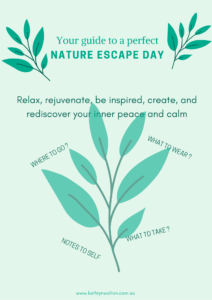
Are you more of a ‘podcast person’ than a ‘blog person’? Listen in to the audio version of this blog by clicking the PLAY button below.
My Nature Escape Day with a friend
I recently shared a Nature Escape Day with my friend and fellow business owner Jessica Carey where we went off the beaten track, explored the ‘outer world’ of the land we visited as well as our own ‘inner worlds’, and talked about fear, vulnerability and choosing your own path in life. I’d love you to meet Jessica in my next blog post. You’ll also be able to listen in to our conversation on the Outdoors is my Therapy podcast when it’s released shortly! (Watch out for Episode 30)
 Discovering mountain biking as life’s ultimate parallel universe in her middle age, Kathryn Walton shares information and reflections that inform, inspire and empower women to a healthy and active lifestyle.
Discovering mountain biking as life’s ultimate parallel universe in her middle age, Kathryn Walton shares information and reflections that inform, inspire and empower women to a healthy and active lifestyle.
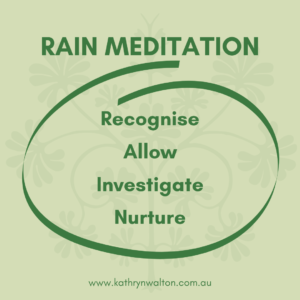 R – RECOGNISE what is happening right now in your body (sensations, emotions, thoughts)
R – RECOGNISE what is happening right now in your body (sensations, emotions, thoughts) Discovering mountain biking as life’s ultimate parallel universe in her middle age, Kathryn Walton shares information and reflections that inform, inspire and empower women to a healthy and active lifestyle.
Discovering mountain biking as life’s ultimate parallel universe in her middle age, Kathryn Walton shares information and reflections that inform, inspire and empower women to a healthy and active lifestyle.





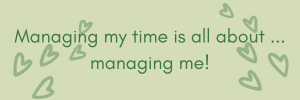
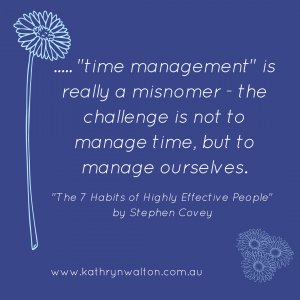
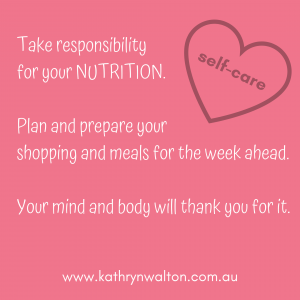
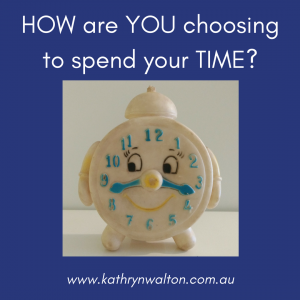





 Donna Neale-Arnold was my co-facilitator and special advisor at our recent retreat. She shared her w
Donna Neale-Arnold was my co-facilitator and special advisor at our recent retreat. She shared her w